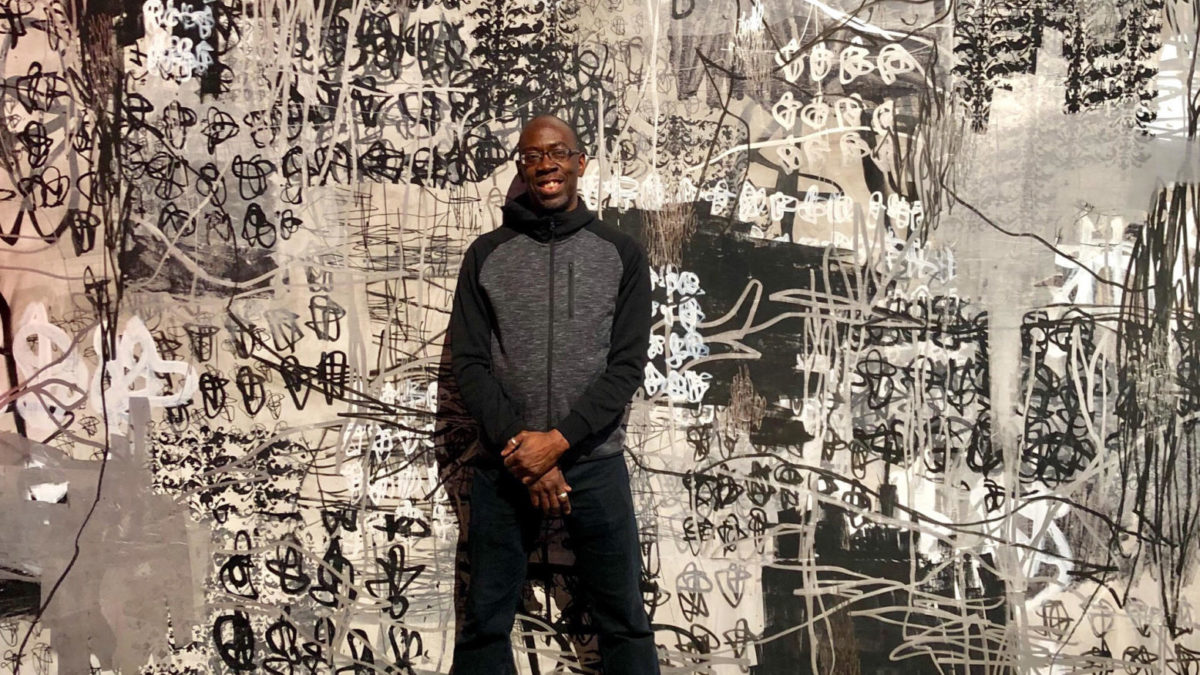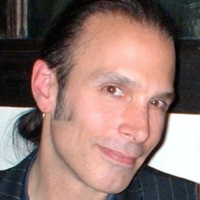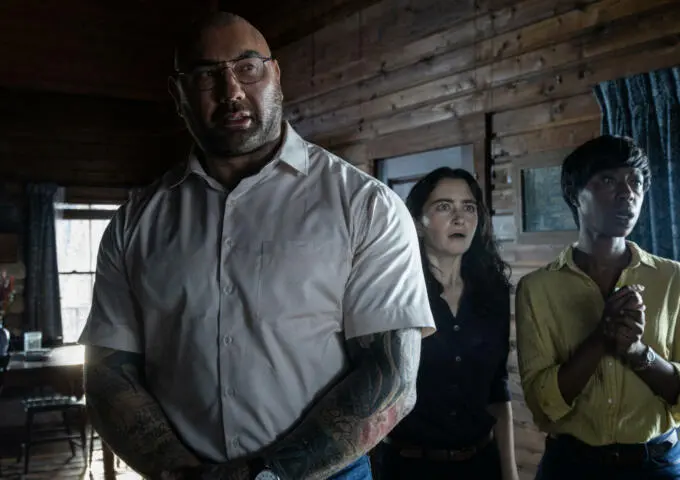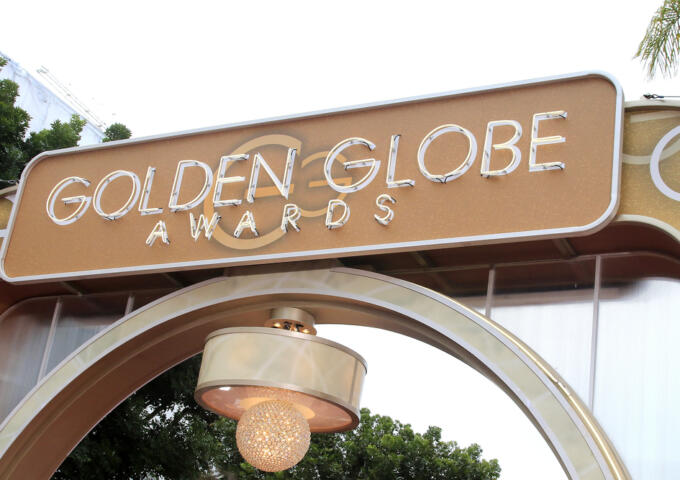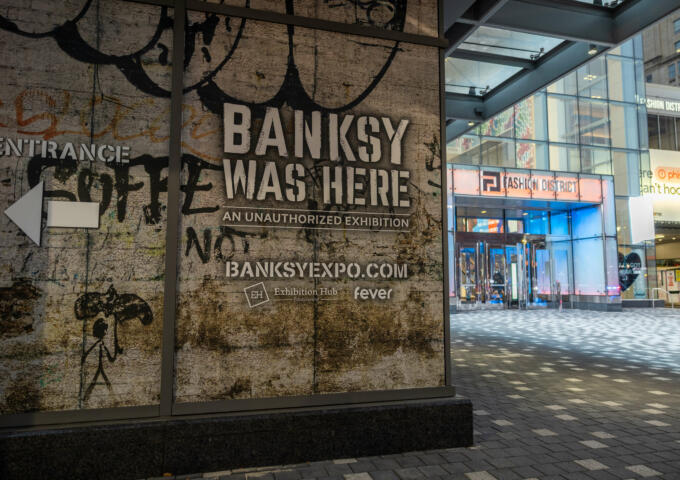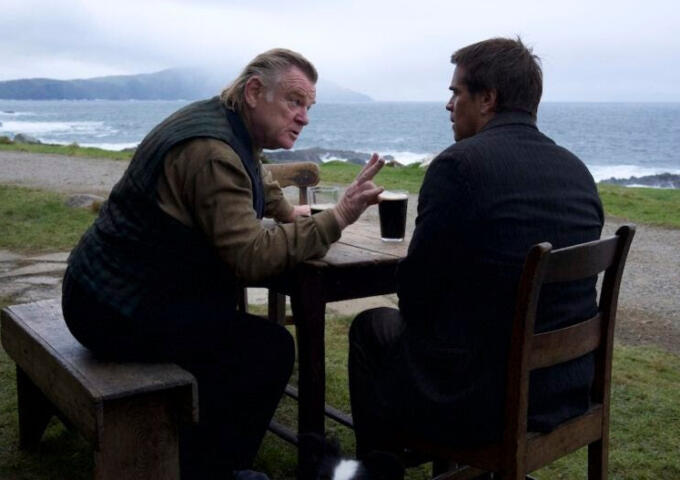To be an artist, confident and secure in his lodgings, only to be suddenly ripped from one’s longtime home is a shock to the system.
Philadelphia’s Tim McFarlane, renowned for his pointedly edgy paintings and works on paper had a lucrative residency with the Bridgette Mayer Gallery – until Mayer closed its physical location at 709 Walnut to concentrate on private sales. Without a home base to show new work, McFarlane was an artist adrift for several years.
Things changed in 2018 when he hooked up with a pal-employee at Poggenpohl, a high-end German kitchen design firm in Old City, that had sizable wall space for McFarlane to use.
“I put up five paintings and saw it as a chance to get work out into the world that hadn’t been seen since I made them three years prior,” said McFarlane. Now, after considering making temporary painting/drawing-based installations in various untraditional spaces, McFarlane and Poggenpohl will collaborate again at its 230 N. 2nd St. location, on an exhibition titled “You Don’t Know the Whole Thing,” debuting July 5 and running through Aug. 31.
Before the unveiling, he caught up with PW to talk all things art, and the new life being breathed into his.
How has the temporal nature of space – availability, shape, location, timing – changed your work most radically between 2015 and the present?
Two things happened since then that affected my relationship to space and how it relates to my work. One, Bridgette closed her physical space, which uprooted my gallery “home base,” so to speak. So, my first issue was adjusting to the new reality of not having a designated place in my hometown to have solo shows. Two, I had to relocate my studio twice since then, each time downsizing in workspace due to economic factors related to increasing rents and personal economic challenges stemming from a divorce. All of this caused me to reconsider how I made work and made me reconsider my relationship to works that I had from previous years.
Going back to your 2013 ‘Presence’ at the Bridgette Mayer Gallery, I detected harder lines and edges – bold, brash, colorful, more confident – perhaps more than I do with the work I have witnessed for the new exhibition. Do you feel less at ease, not so much as an artist, but just as a person who has had an important part of his world ripped from under him?
I think that the work may reflect some of those personal and professional changes in terms of compositional strategies, but I don’t feel any less confident, and the work doesn’t feel less confident to me. The gallery closure was a loss, not only for the artists involved but for the city’s contemporary art scene, as well. I did feel ill at ease for a little over a year and had a hard time wrapping my head around how I was going to move forward with making new work. I was used to certain spaces, how I moved and worked in them. Now, I had to start from scratch. It wasn’t until March that I began to feel like I had a grip on how I wanted to proceed with the new realities of my studio and living situation. All of this has stoked my determination to find other ways of having my work seen in the area, hence my involvement with Tiny Room for Elephants at Cherry Street Pier and spaces like Poggenpohl, where I’ve had the fortune to make a large, experimental painting/drawing-based installation.
The newer work you’re displaying is frazzled, [but it] is also in black, grey and white, which I find fascinating. Do you feel there is a new blurriness in your work? Is it directed and purposeful, or is it organic?
I use black, white and silver paint. The grays are mostly a by-product of the layers I incorporate and chance mixing of paint or markers on the surface. There is a kind of blurriness that’s new to my work, and it’s both purposeful and organic. Most of my paintings and works on paper are grounded in repetition, call and response between layers and forms, and a large dose of chance allowing the work to determine its path and me stepping in to reinforce its internal logic and order, or impose some order of mine, where needed.
Does the knowledge that a painting or drawing might not last affect what you do or what you present?
There’s a freedom in knowing that a piece I make won’t last in its present form. Currently, I’m of two mindsets when it comes to my work: permanence and impermanence. I want to make things that will hopefully last a long time, but I’m also more fascinated with the temporary. [I made a piece at] Cherry Street Pier [which] was a major contributor to my interest in making temporary, site-specific work. The site-specificity of the painting was mind-opening because I had the opportunity to make something large that isn’t possible in my current studio. That led me to embrace the idea of going to a particular space, making work and leaving or dismantling it to reuse parts of it for future works. All of this ties into how I see life unfolding in the streets, on walls and other spaces where I notice changes happening all of the time and nothing is static. The inevitability of change, because of humans, [or our] weather or other things is always there.
This time, you knew exactly what space you would be dealing with for installation – 13 feet wide, back of a showroom, somewhere somewhat covert. How did that affect where you would go with this new work?
It meant that I was able to make something that people may not be expecting. Not only that but being afforded the opportunity to have near carte blanche to do what I wanted in a space like that was fantastic. The first thing I thought was that this new work was going to contrast greatly with Poggenpohl’s sleek, luxury surroundings. The next thought was that I wanted to make something that was outside of my stand-alone paintings, this being a rambling, somewhat chaotic mixed media drawing/painting that isn’t entirely flat on the wall and interacts with the showroom space in a different manner than my paintings would.
I understand you are interested in the inclusion of random, once-cherished belongings found on the street and public spaces changed by anonymous but public mark-making, like graffiti. Not just any old graffiti, but the resulting patterns left by the erasure or buffing of graffiti. Why is that fascinating and does it wind its way through the new exhibition?
That’s fascinating because of the intertwined notions of permanence/impermanence, an obscuring and remaking of what came before gentrification, the ideas of memory/nostalgia and the seemingly innate need for human beings to leave a mark, physically and metaphorically.
How do you embrace all that in the new exhibition?
In You Don’t Know The Whole Thing, some of the aforementioned conditions occur in masses of my glyph marks and other patterns repeating themselves across the work in various ways and on different materials, like paper and clear acetate. There’s obscuring of some passages through direct mark-making and covering of areas, while the placement of something like reflective mylar overdrawn marks on paper creates another kind of displacement.
Is the buffed down/out thing a Philly thing? Is that where you’re gleaning that inspiration? It seems to certainly be more prevalent in Philly than say, in Manhattan or Brooklyn.
Buffing isn’t exclusive to Philly, of course, but it is part of what informs my present artistic concerns. I live In South Philly, on 13th, just south of Washington Avenue, so in my walks, there’s ample chance to observe various changes to the surrounding environment that’s still rough and gritty but is being increasingly gentrified. Regardless of all of the macro changes going on, there is still a lot of drama going on at the street level of basic human tendencies to want to be acknowledged and to say, “I was here.”
TWITTER: @ADAMOROSI
